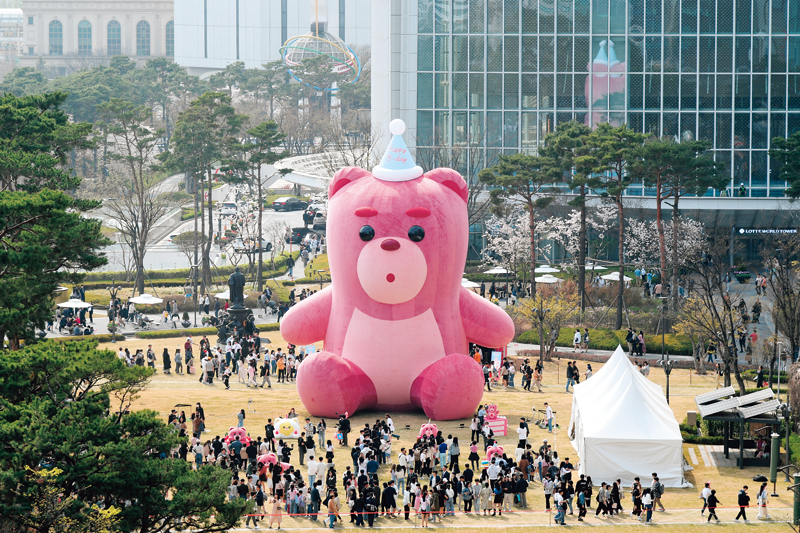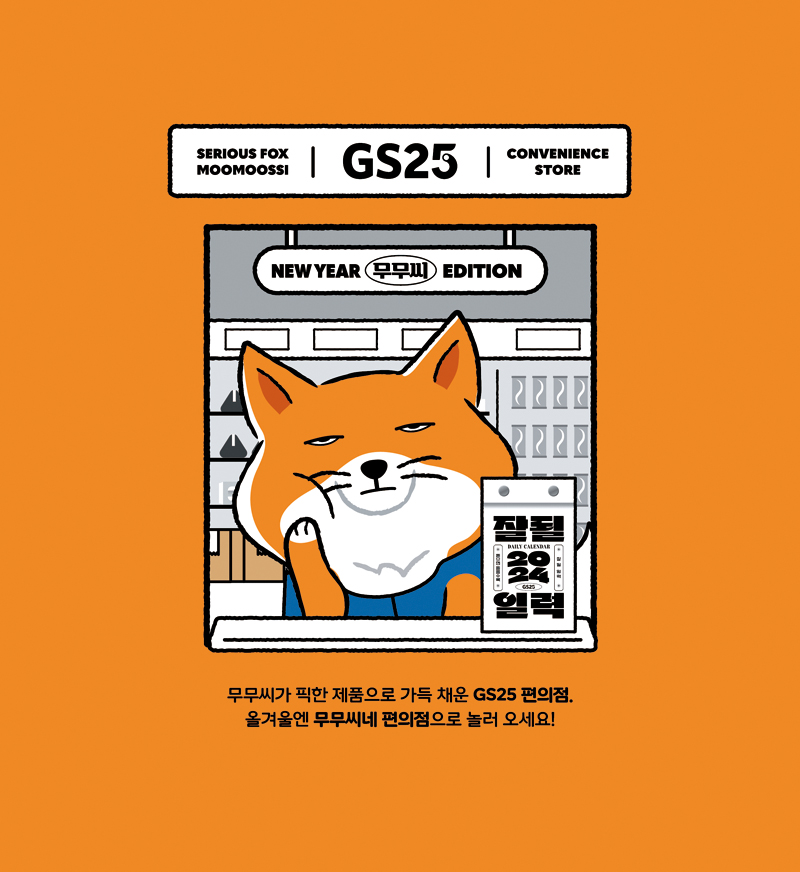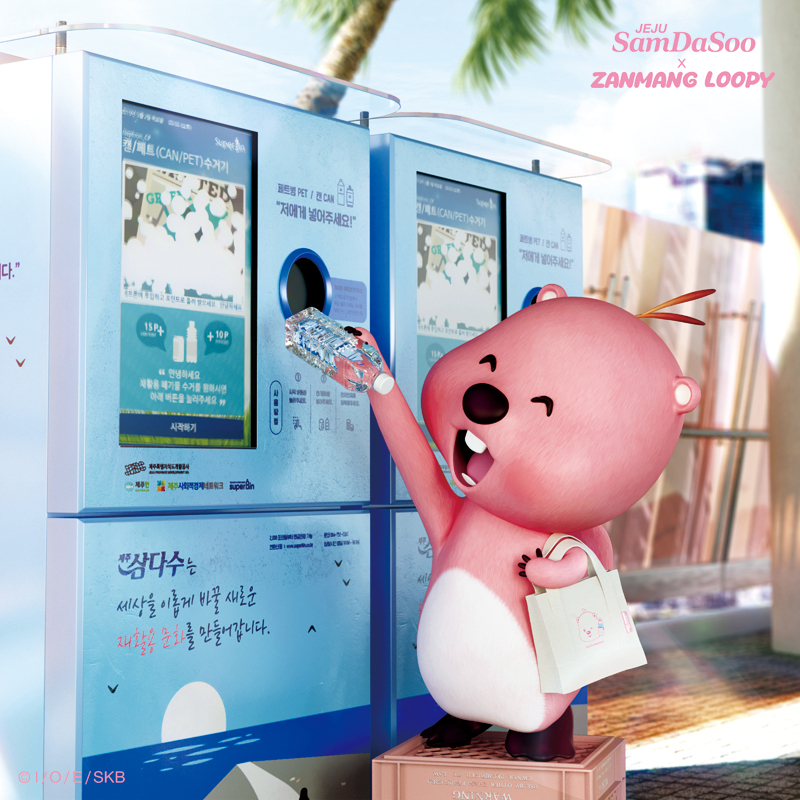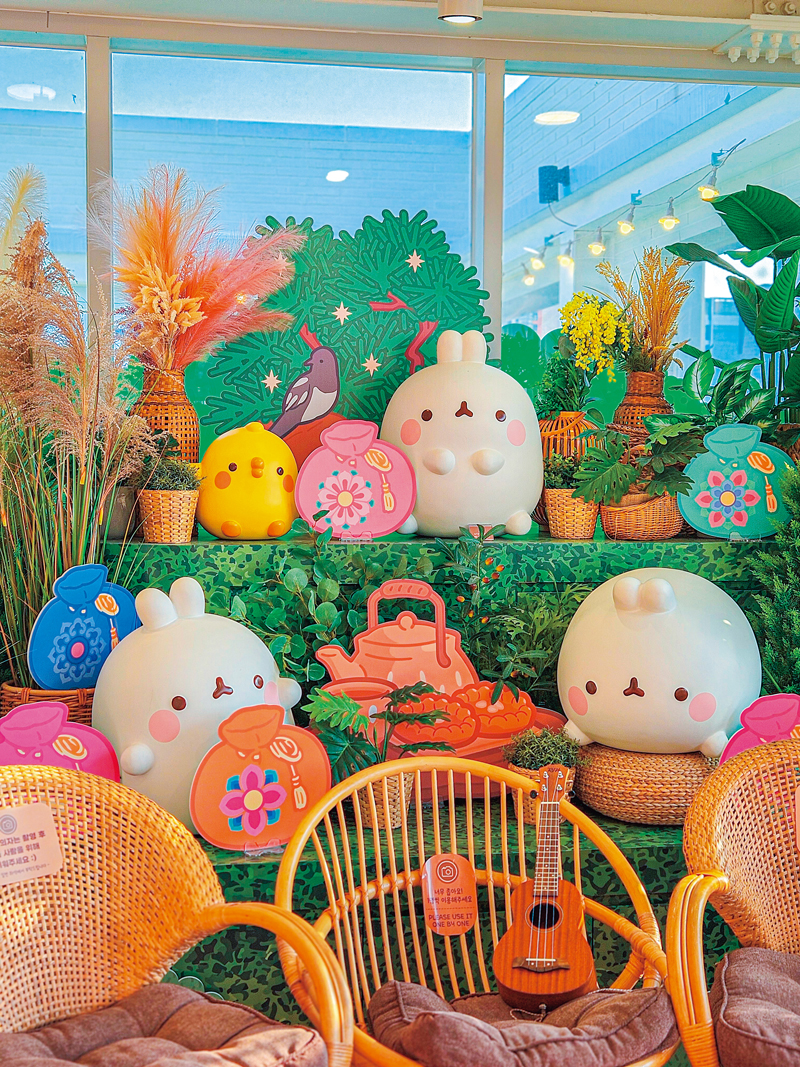Korean creators of animated characters are strategically expanding to the global market, using a wide range of platforms and outlets. Previously the domain of children and kidults, the notion of characters as a commodity is spreading to every demographic in Korea and beyond.

A 15-meter-high version of corporate mascot Bellygom captivates visitors at Time Villas, a Lotte Premium Outlet in Gyeonggi Province, in May 2022. Created by Lotte Home Shopping in 2018, Bellygom is considered one of the most successful in-house Korean corporate characters.
ⓒ Bellygom
Before the 1980s, Koreans only deemed something a “character” if it appeared in comic books, cartoons, and movies. Since then, computers, smartphones, and the internet have refashioned where and how characters are used.
The creative content industry spearheading this transformation has benefited from a growing number of outlets and demographics. Instead of just catering to children, the character-driven market is now targeting Koreans of all ages.
For example, emoji and character usage on cellphone messaging services is so commonplace that it has become second nature to most people. Indeed, they are everywhere you look: on electronic devices, apparel, and household products, in public service campaigns, and of course in movies and on television.
CHARACTER COMMERCE
The commercialization of characters in Korea started to take off around the late 1980s and early 1990s. It paralleled the development of Korea’s domestic industry for cute stationery products. A prime example is Dooly the Little Dinosaur, a manhwa, or comic, by cartoonist Kim Soo-jung. Serialized from 1983 to 1993 in the comic magazine Bomulseom, it enjoyed great popularity for its interesting characters and charming dialogue. From the mid-1990s, the characters began to appear on a wide range of products, including toys, stationery, clothing, electronics, and even decorative flooring for children’s rooms.
The late 1990s and early 2000s were marked by the emergence of high-speed internet networks across Korea, and online animations of this period introduced a flood of new characters. Notably, in a market that had long been dominated by imported characters, two Korean characters grabbed attention both at home and abroad. One was Mashimaro, the “bizarre bunny” protagonist of Kim Jae-in’s The Story of Mashimaro Forest, whose surging popularity paved his way to the United States and Japan; the other was Pucca, a superhuman noodle delivery girl created by character design company VOOZCLUB, which successfully entered the European market around the same time.
The next stage in the evolution came with the advent of smartphones. In 2012, mobile messaging service KakaoTalk launched its own range of emoji characters, known as Kakao Friends. Designed by Kwon Soon-ho, also known as Hozo, they include Muzi, a playful piece of radish in rabbit clothes, and Tube, a somewhat insecure white duck whose alter ego is a furious, Hulk-like green duck that spits fire. The characters became so popular that they ranked first in a character preference survey conducted in 2017 by the Korea Creative Content Agency (KOCCA). Introduced to enhance communication, Kakao Friends differentiated itself by allowing users to better express their emotions. The original lineup of seven characters is credited with ushering in a new era in Korean character creation.
FANDOM FORMATION
Today, character content is entering yet another stage in its trajectory to the center of Korean consumer culture. The most notable change is the increasing number of companies developing their own characters.
During a pop-up event in January 2024, a big crowd descended on the flagship outlet of convenience store chain GS25, hoping to see MOOMOOSSI, an anthropomorphic Tibetan fox introduced in 2022 by GS Retail, the chain’s operator. According to the company, MOOMOOSSI was so successful that cumulative annual sales of branded goods and merchandise exceeded 1 million units. To keep consumers engaged, MOOMOOSSI also has its own Instagram account with more than 20,000 followers.
Another character playing an even greater role in attracting consumers and building fandom is Bellygom, a pink teddy bear created in 2018 by Lotte Home Shopping. Bellygom first gained traction through YouTube and amassed a huge fan base there and on TikTok. In 2022, it won the Presidential Award in the Best Character category at KOCCA’s Korea Content Awards. With Bellygom reaching an increasingly international audience, Lotte Home Shopping is even taking steps to boost the bear’s profile abroad.
Character-based branding is also being embraced in the public sector. As early as the mid-1990s, local governments were already using characters in their campaigns. The massive success of Goyang Goyangi, or Goyang Cat, a feline character developed in 2011 by Goyang City, further demonstrated the immense potential of characters in promoting cities and regions.
More recently, JOAYONG, the mascot of Yongin City, has been garnering attention. Launched in 2016, the horned green dragon has maintained its popularity across different platforms and formats, with new content constantly being developed. A recent JOAYANG product created in collaboration with Everland, Korea’s largest theme park, sold over 4,000 units within two weeks of its release, proving that characters from public organizations can also land commercial hits.

Launched by GS Retail in 2022, MOOMOOSSI is a rising star with more than 20,000 Instagram followers and over 50 types of merchandise on sale.
ⓒ GSRetail
SIDEKICK STARDOM
Sidekicks of popular characters have become marketable sensations as well. The titular character of the animated children’s TV series Pororo the Little Penguin made such a splash that he became known as the “Children’s President” in Korea. Unsurprisingly, merchandise inspired by the series sold like hotcakes; competitive with imported characters, “President Pororo” became a game-changer for the Korean character industry. Later, Pororo’s beaver friend Loopy went on to enjoy great popularity as an internet meme in 2019 and a KakaoTalk emoji in 2020. While Pororo was particularly loved by young children, internet meme’s iteration of the beaver, renamed Zanmang Loopy, became a favorite among people in their 20s and 30s.

Brand ambassador Zanmang Loopy is a new iteration of a beaver character from animated children’s TV series Pororo the Little Penguin. In 2023, she collaborated with mineral water brand Jeju Samdasoo to deliver an eco-friendly message.
ⓒ I/O/E/SKB
PROLIFERATING PLATFORMS
Ultimately, the character industry is about more than just selling merchandise. Characters are now building fandoms and even acting as influencers. This is largely due to the generational shift of their audience.
People who grew up with cartoons and video games make up the main adult consumer demographic for today’s character industry. This means that characters, once considered the realm of children and kidults, are now firmly embedded in the culture of adults. In addition, the younger generation’s tendency to respect each person’s tastes and hobbies while delving deeply into individual interests has laid the foundation for characters to spread widely.
Another factor compounding this development has been the industry’s strategic placement of trendy characters. In the past, fictional characters mainly appeared on TV and movie screens, but more recently, they are featured on a multitude of online platforms, including on YouTube, TikTok, and other social media.
The result has been greater creative freedom, leading to new characters more attuned to the younger generation’s sensibilities. What’s more, where characters were once considered mere marketing vehicles, the focus is now on providing a diversified consumer experience.
According to KOCCA, the domestic IP market for characters continues to grow steadily each year and is expected to reach 16.2 trillion Korean won (US$12.2 billion) by 2025. As the locus of character content shifts from Japan and the US to Korea, the future is certainly bright for Korean characters.

Gallery Molang, a pop-up store in Yeonnam-dong, Seoul. First created by illustrator Yoon Hye-ji in 2010, the character was adapted into a TV series in 2015 by French animation studio Millimages. Molang’s popularity has led to collaborations with various brands.
ⓒ Hayanori